The 1925 serum run to Nome, also known as the Great Race of Mercy, was a 675 mile dog team relay of diphtheria antitoxin across the U.S. territory of Alaska, accomplished by 20 mushers and about 150 sled dogs in only five and a half days, saving the community of Nome from a deadly epidemic. The race became both the most famous event in the history of mushing and the last hurrah for a means of transportation which had opened the vast northern territory of Alaska.
The gold rush town of Nome was still the largest town in the northern half of Alaska in 1925, with a population of around 1,500 souls. When the Bering Sea froze over the only link to the rest of the world was the Iditarod Trail, which ran 938 miles from the port of Seward, across several mountain ranges and through the vast Interior of the territory before reaching Nome. Mail and supplies were customarily transported by train to Nenana, and then freighted by dog team 675 miles from Nenana to Nome, a journey which normally took 25 days.
In January, 1925, the town’s only doctor, Dr. Curtis Welch, witnessed a series of alarming deaths of his young patients, and on January 22 he sent the following telegram to Governor Bone in Juneau, and to all the major towns in Alaska: “An epidemic of diphtheria is almost inevitable here STOP I am in urgent need of one million units of diphtheria antitoxin STOP Mail is only form of transportation STOP I have made application to Commissioner of Health of the Territories for antitoxin already STOP There are about 3000 white natives in the district.”
By January 24 there were two more fatalities, and at a meeting of the board of health that same day, superintendent Mark Summers of the Hammon Consolidated Gold Fields proposed a dogsled relay, using two fast teams. One would start at Nenana and the other at Nome, and they would meet at Nulato. The trip from Nulato to Nome normally took 30 days, although the record was nine. Welch calculated that the serum would only last six days under the brutal conditions of the trail. Summers’ employee, the Norwegian Leonhard Seppala, was chosen for the 630-mile round trip from Nome to Nulato and back. He had previously made the run from Nome to Nulato in a record-breaking four days, won the All-Alaska Sweepstakes three times, and had become something of a legend for his athletic ability and rapport with his Siberian huskies. His lead dog, the 12-year-old Togo, was equally famous for his leadership, intelligence, and ability to sense danger.
Nome Mayor Maynard proposed flying the antitoxin by aircraft, but the only planes operating in Alaska in 1925 were three vintage biplanes which were dismantled for the winter, had open cockpits, and had water-cooled engines that were unreliable in cold weather. While potentially quicker, the board of health rejected the aircraft option and voted unanimously for the dogsled relay. Seppala was notified that evening and immediately started preparations for the trip. While the first batch of serum was traveling to Nenana, Governor Bone gave final authorization to the dog relay, but ordered Edward Wetzler, the U.S. Post Office inspector, to arrange a relay of the best drivers and dogs across the Interior; the majority of the relay mushers selected were native Athabaskan U.S. mail carriers, widely acknowledged to be the best dog mushers in Alaska. The teams would travel day and night until they handed off the package to Seppala at Nulato.
The mail route from Nenana to Nome followed the Tanana River for 137 miles to the junction with the Yukon River, and then followed the Yukon for 230 miles to Kaltag. The route turned west, 90 miles over the Kaltag Portage to Unalakleet on the shore of Norton Sound, then continued for 208 miles northwest around the southern shore of the Seward Peninsula and 42 harrowing miles across the shifting ice of the Bering Sea.
The serum transfer points were Tolovana, Manley Hot Springs, Fish Lake, Tanana, Kallands, Nine Mile Cabin, Kokrines, Ruby, Whiskey Creek, Galena, Bishop Mountain, Nulato, Kaltag, Old Woman Shelter, Unalakleet, Shaktoolik, Golovin, Bluff, and Nome. And all along the trail were roadhouses which gave the drivers brief opportunity to warm the serum and themselves: the Tolovana Roadhouse, the Minto roadhouse, the Manley Roadhouse, the Eskimo Roadhouse at Isaac’s Point, Shaktoolik Roadhouse, Dexter’s Roadhouse, the Olson Roadhouse, the Solomon Roadhouse, the Bluff Roadhouse, the Port Safety Roadhouse. Links in a thin chain winding across northwestern Alaska, providing brief intervals of safety and protection to the mushers and their dogs.
The story of the 1925 Serum Run was detailed in a bestselling book by cousins Gay and Laney Salisbury, The Cruelest Miles (W.W. Norton & Co., 2003), but the most compelling recounting was given in a book which had been written 73 years earlier, by the famous Alaskan musher Leonhard Seppala, who carried the serum over the treacherous ice of Norton Sound. This is an excerpt from the final chapter of Seppala: Alaskan Dog Driver, by Elizabeth Ricker (Little, Brown & Co., 1930), which Seppala wrote as a tribute to his intrepid lead dog, Togo:
The Commissioner had asked me to get off without delay. He explained that such serum as they had was several years old, and with the epidemic steadily increasing they were in dire need of a new supply. I singled the dogs out one by one; naturally not one wanted to be left behind. Twenty were chosen. I planned to drop some of them off along the way, to be cared for at Eskimo igloos until the return trip, when we could substitute the fresh dogs for the tired ones. Also, if any of them showed any signs of weakness or sore feet, they would have a chance to rest up and be in good condition for the home stretch. I intended to leave twelve dogs by the way, arriving in Nulato with a team of eight. I should hardly need more, as I was told the package containing the serum was very light. With fresh reinforcement on the way back I should be able to drive day and night. Thus I picked out the twenty best dogs, though at the time all were on their best behavior, raising their paws politely and pleading to be taken. A dog named Fox was left as leader for the cull team, which was to continue hauling supplies during our absence and was composed of dogs too slow to be of much use in a fast run.
The people of Nome gave us a great send-off. They knew it was a long, hazardous trip, and they realized what a word of encouragement would mean. The first day we made about thirty-three miles, and from then on the team warmed up to the work and averaged fifty miles and over every day. We passed two villages where there were government schools for Eskimo children, and I told the teachers about the epidemic, advising them to close the school, to keep the children in quarantine, and away from people passing from Nome.
We were lucky in having favorable weather, and the trails were at their best. According to plan, some of the dogs were left along the way to be cared for while the rest of us pushed on. On the third day we arrived at Isaac’s Point, where we stopped with an Eskimo family, having covered a hundred and thirty miles since leaving Nome. The next day we started off for Shaktoolik, a native village on the south side of the Bay. It was late by the time we set out over the ice of Norton Bay. We could see it was blowing hard out on the Bay, and with the north wind at our backs we were sure to make good time. The team would deserve a good rest at the end of the day, and surely I should welcome it as well as the dogs. Having crossed the ice, and being just in sight of our destination for the day, we scented another dog team and struck out with a great spurt. As we came up I could see that the driver was busy refereeing a dog fight. With a word of greeting to the man, I was about to pass by when he called to me. In the wind, and with my parka hood up over my ears, I got only three words” “serum–turn back.” I thought I must have misunderstood, but when I looked back over my shoulder I saw the other driver waving his arm. I called to Togo to “gee,” but he couldn’t. The other dogs were still on the spurt, and I had to run about a mile further on before I could slow the team down and turn them. We came to a stretch of hard snow, where I was able to get the dogs under control. Though they hated to, they followed Togo. When we reached the other team a package was tossed into my sled and the stranger handed me a paper which proved to be the instructions accompanying the serum. The young dogs in my team began acting disgracefully, wanting to pick a quarrel with the strange team. Their driver explained that after I had passed out of telephone communication the epidemic had increased so alarmingly that the officials had decided to speed the serum by short relays running night and day. Thus I had reached the serum after traveling only a hundred and seventy miles, instead of the three hundred for which I had originally planned.
We had had a hard day, covering forty-three miles with the wind at our backs. But the return was even harder. The gale was in our faces, the temperature was thirty below, and we had the forty-three miles to do over again in the dark. There was nothing for it but to face the music. The dogs did their best, and I drove as if we were in a race. The ice of Norton Sound is notoriously treacherous: it has a habit of shifting and breaking up, so that before travelers know it they have gone for miles on a loose ice-cake with open water on all sides, slowly but surely being blown out into the Bering Sea.
In spite of these unpleasant prospects, we managed to reach Isaac’s Point, and after a drive of nearly ninety miles the team were grateful for a brief rest in a comfortable kennel. They were wild for their rations of salmon and seal blubber. After they were fed I went into the igloo and read over the instructions. They called for the serum to be warmed up at each station. Accordingly I pulled the sled inside, and undid the fur and canvas wrapped around the package. I found the serum was sealed up in paper cartons, and as I saw nothing about breaking the seals I instructed the Eskimo to make the igloo good and hot and left the package exposed to the heat. As I looked it over and felt of it I was convinced that if it was a liquid it must have been frozen in the severe cold, though we had protected it as well as possible. I doubted if the heat could penetrate the paper cartons, but I had taken off the last wrapping which I was authorized to touch.
When I had allowed as much time as we could spare I came out to the dogs and began putting them back on the line. An old Eskimo stood by as we hitched up, and observing the increase in the wind he cautioned me: “Maybe ice not much good. Maybe breaking off and go out. Old trail plenty no good. Maybe you go more closer shore.” I thanked him and followed his suggestion, taking a trail further in. At that, we came within a few feet of open water, as the trail over which we had traveled only the day before had broken off and drifted far out into the Bering Sea.
During the afternoon we pulled into Cheenik Village, where another driver was waiting with his relay team. We had traveled in all three hundred and forty miles in the interest of the serum. No other relay made more than fifty-three miles. After delivering the package to the driver at Cheenik, a tired driver and dogs all had a good rest until the next day, when we drove to Solomon and then on into Nome. When we arrived there the whole town seemed to be out to meet us. It was like the winner’s reception after a Sweepstakes race.
News of the diptheria had found its way to the outside papers, and in the States the teams were being followed from day to day by the press. They had become heroes while they were peacefully going on their way, totally unconscious that they were headliners in the press. The last relay team landed the serum in Nome at six o-clock on the morning of the second of February, 1925.
The Serum Drive was Togo’s last long run. In that drive he had worked the hardest and best. I appreciated this, and tried to take the best possible care of the old dog. Togo, in his sixteenth year, seemed content to rest on his laurels. He even posed without fuss for a photograph with his cups and trophies, perhaps imagining himself as he was in the old days. It seemed best to leave him where he could be pensioned and enjoy a well-earned rest. But it was a sad parting on a cold gray March morning when Togo raised a small paw to my knee as if questioning why he was not going along with me. For the first time in twelve years I hit the trail without Togo.







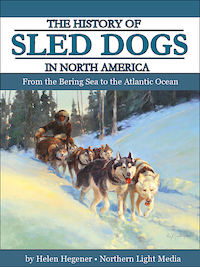






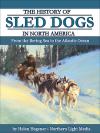
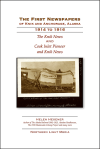


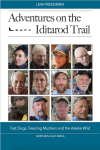





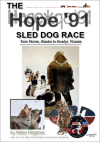



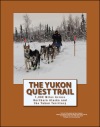







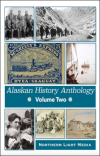
Pingback: Icebound | Northern Light Media
This movie was amazing! We loved it and I went through a box of Kleenex!! Beautiful scenery and a wonderful, heart-wrenching movie. We all NEED more movies like this one!!
LikeLiked by 1 person
For those of us who have been stolen by Siberians, dragged kicking and screaming into the winter wilds (even on a bike or rig, in PA) while the dogs charge gleefully down the trail… this is the best sled dog film yet, and a fairly accurate telling of the Serum Run history. Seppala and Togo are a large part of the foundation of the Siberian breed in North America, and it’s wonderful to see them get their due.
Also wonderful to see the true nature of Siberians onscreen: they wreck things, chase reindeer and moose, tangle, wreak havoc in house and workshop, dig up the universe, wreak more havoc…
…and save the world with their energy, wisdom, and endurance.
While the average human might want to adopt a pibble or golden, if you do end up in the Siberian camp, research the breed carefully… and buy a harness.
Most dogs and humans benefit from ski-joring, bike-joring, scootering or canicross. Gets you off the couch and onto a trail in the sun.
And can we just mention how much Willem Dafoe LOOKS like Seppala… good job all!
LikeLike
PS… I’m comparing the actual history to the Disney+ film Togo, which was awesome.
LikeLike
The Movie “Togo” is truly an Amazing Movie. At first when I watched it I thought it wasn’t a real story but reaching the end I realised it actually was a real Story and Honestly guys let me tell you, I had no idea about this Great event until now.
I searched up more on this Movie and it left me in tears.
I’m a Person who loves Animals and I’m just left with no words to describe how I felt after watching the BRAVERY of a Sled Dog whose more like a Leader……
LikeLike
Pingback: 18-Day Mushing Expedition to Travel Along Historic Serum Run Trail – KNOM Radio Mission
Pingback: 18-Day Mushing Expedition to Travel Along Historic Serum Run Trail – KNOM Radio Mission – Travel Recomends
Pingback: 18-Day Mushing Expedition to Travel Along Historic Serum Run Trail – KNOM Radio Mission - Life Style Blog